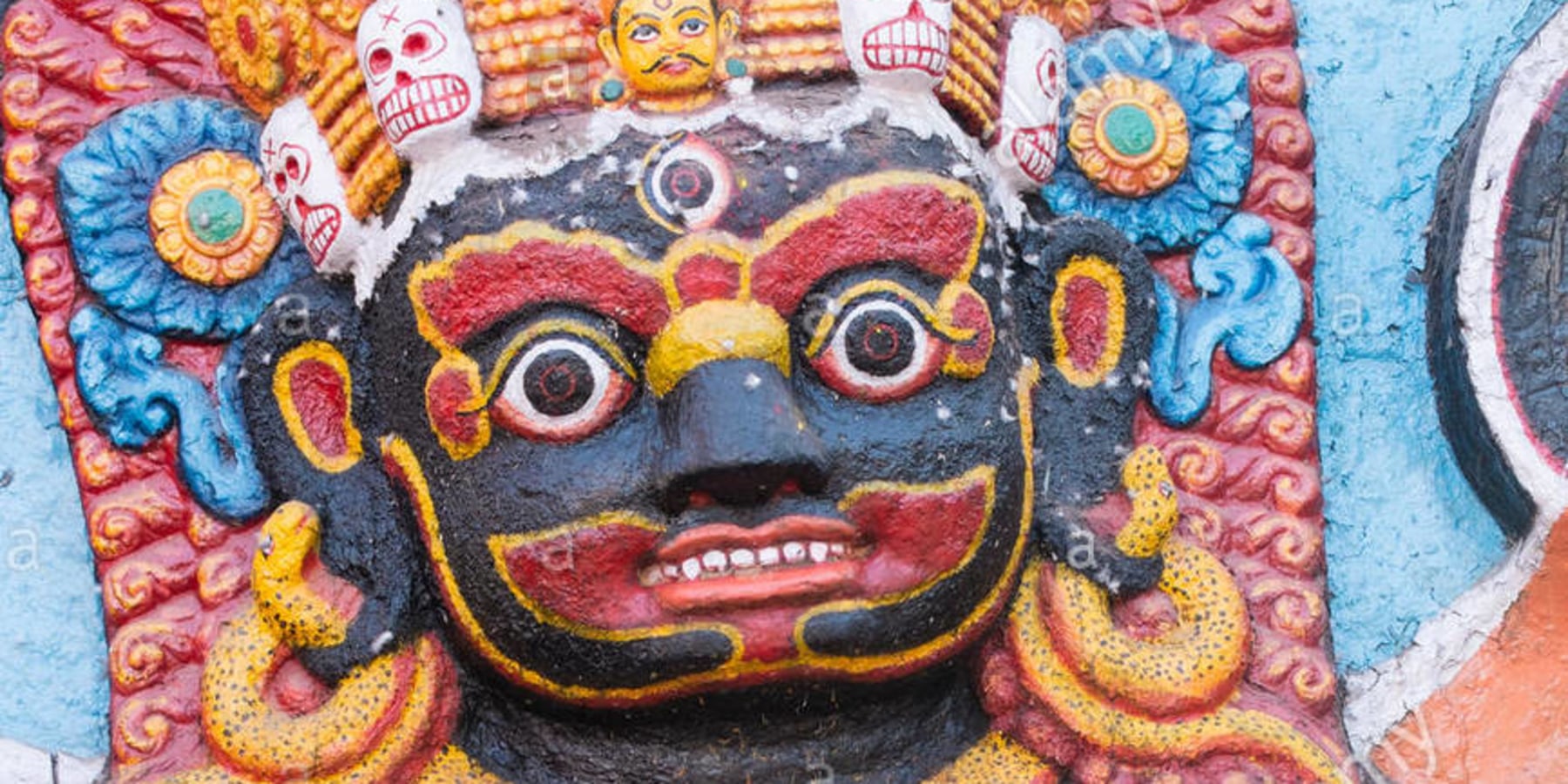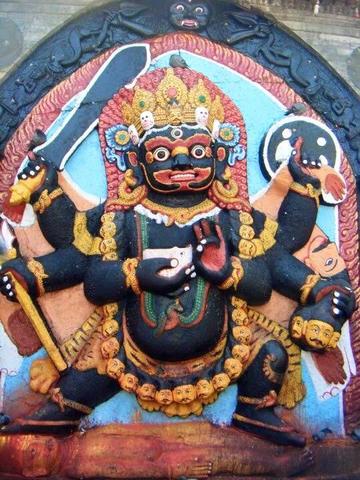
Hinduism is a multi God religion basically with numbers of incarnations or various forms and manifestations of Hindu Trinity Gods and their correspondent shakti Goddesses. Every Avatar or Incarnation are embodied with a particular purpose to save the universe and to protect their devotees from the Evils. General travelers to Nepal are usually familiar with major deities of Hinduism like; Shiva, Ram, Ganesh, Kaali and Krishna etc. The word "kaali" has astonishingly spread all over the western world as "the strongest symbol of women empowerment" where as her corresponding male shakti and strong counterpart spouse "Mahakaal" is less familiar among many visitors of this country. This text below tries to explain the major features of one of the deeply worshipped Gods of protection among the Shakta cult of Hinduism as well as among the Vajrayaan cult of Buddhism. (Written by Dinesh Thanju)
Photo : (7th century old Kaal Bhairav statue at Basantapur Durbar Square in Kathmandu)
MAHAKAAL BHAIRAV
(The Great God of Time & Death)
Contrary to his fierce appearance Mahakaal is widely worshipped by Hindu and Buddhist devotees in Nepal and Tibet as an obstacle remover and as CHHETRAPAL or the territorial guardian deity. He is also a wrathful incarnation of Lord Shiva among Hindus and divine protector of Dharma (Law of Teachings) for Vajrayana Buddhists. His feminine energy (shakti) is the Goddess Kaali in Hinduism and Vajrayogini in tantric Buddhism. He is sometimes depicted standing on a corpse symbolizing him as "Conqueror over Death", hence Mahakaal is also worshipped for good health during prolonged illness due to being haunted by an evil spirit.
He often posses with terrifying wide opened eyes, a big belly, a third eye, long hanging earlobes, a garland of demon skulls and a belt and bracelet of the Holy serpent. His symbolic attributes are the skull cup on the right hand filled with blood and the left hand in Shunya Bindu Patra Mudra (gesture shows knowledge and united wisdom), a flaying knife, skulls pierced trident, two-sided drums and a sword among others. The wrathful figure is seen steering the wheel of destiny in the "Wheel of Life" Tibetan painting as undoubtedly the Great Mahakaal. Many people misunderstand the word "kaal" as black colour. Black is a magical protective color among Nepalese devotees, hence infant children get their eyes painted black by their mothers along with a black string around their waist and a tiny black dot on their oily cheeks after a mustard seed oil massage. Infact, many people also love to sing the 70's blockbuster titled "Black Magic Women" by Gregg Rolie in his US album Santana, with regards to this.


